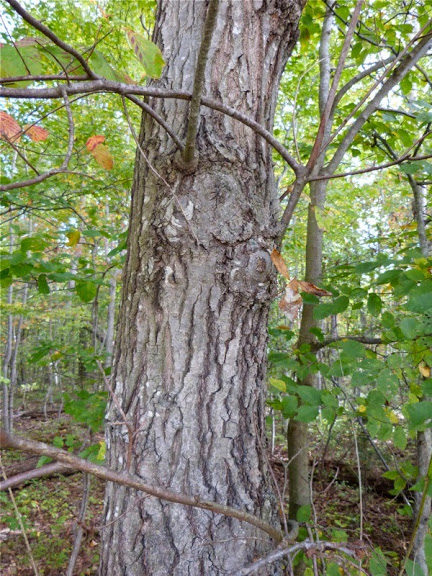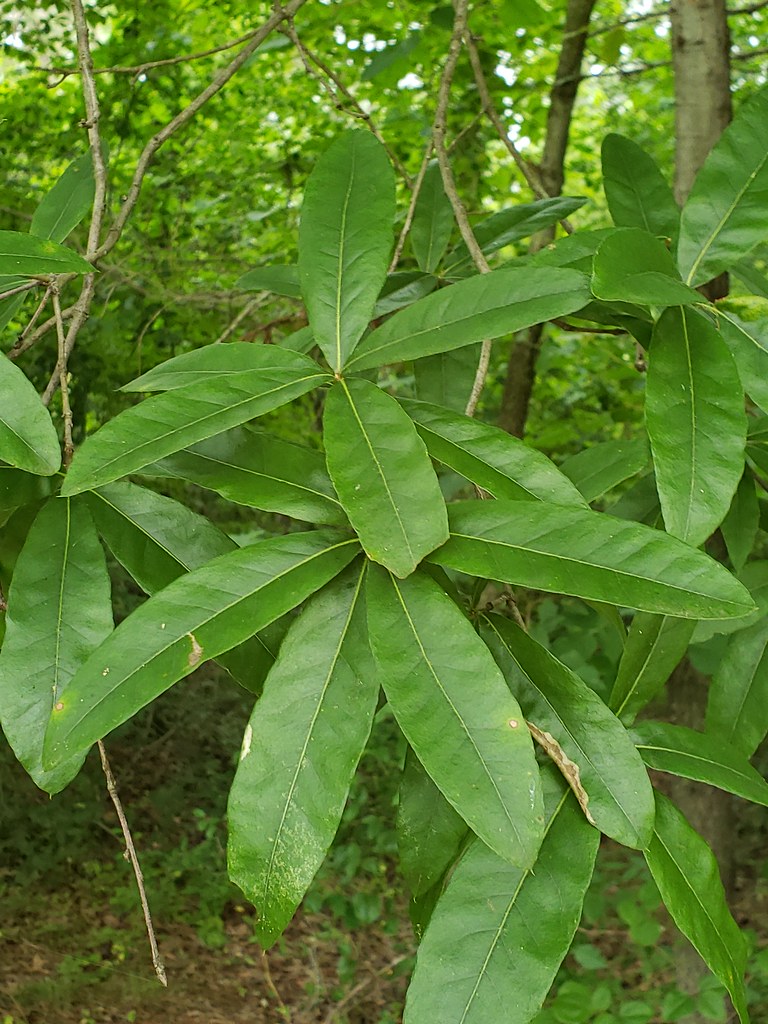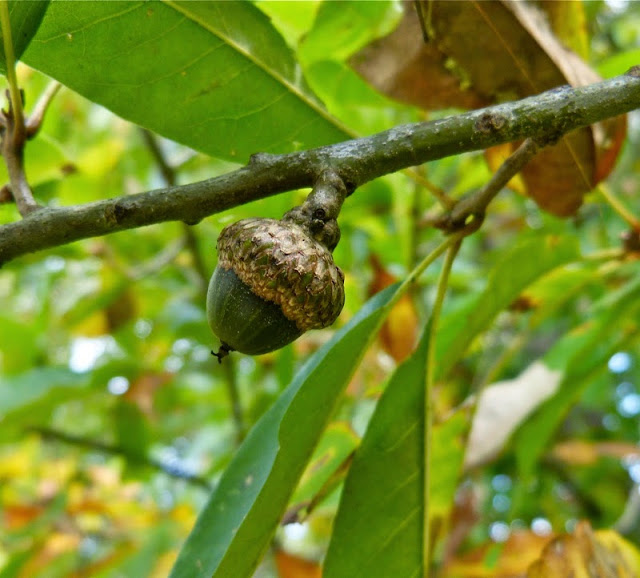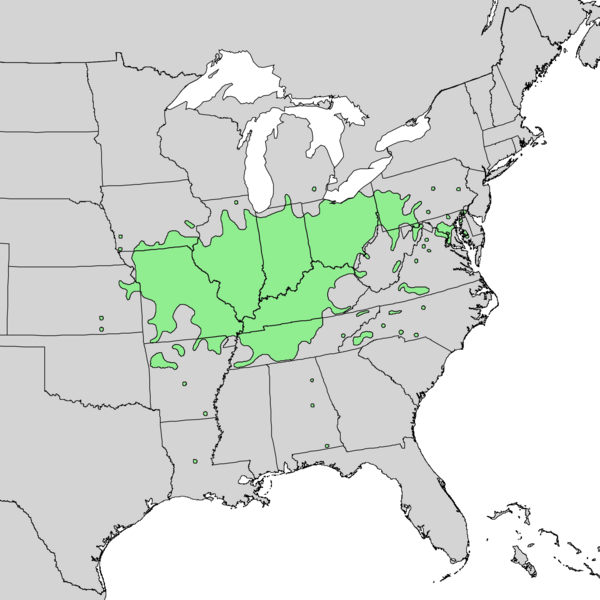Shingle Oak
Quercus imbricaria Michx.
Description
Shingle oak, also called laurel oak, belongs to the beech family (Fagaceae) and is a large, deciduous tree that reaches 70 feet tall with a broad crown of nearly 60 feet ¹. The mature trunk may reach 3 feet and has a gray-brown bark with low ridges. Unlike most other North American oaks it has unlobed, entire leaves with a single bristle at the tip of the 3 to 6-inch long leaf ¹. Male flowers are in catkins and the female flowers are in spikes ¹. It is wind pollinated. Its acorns are round, 1/2 to 3/4 inch long with a cap that covers the top third of the nut ¹. Like other oaks in the red oak group, the acorns take two seasons to mature and must over winter on the ground before germinating ¹.

Bark of mature shingle oak. @J. Brighton*, Maryland Biodiversity Project ²

Leaves of shingle oak. @B. Hubrick*, Maryland Biodiversity Project ²

Acorn of shingle oak. @J. Brighton*, Maryland Biodiversity Project ²
Distribution
Shingle oak is distributed in central North America from Pennsylvania to Missouri and south to Tennessee. In Maryland it is found in the Piedmont region from Baltimore and Carroll Counties to Prince Georges County and reaches its greatest number in the Patapsco River drainage ².

Natural range of shingle oak. Wikimedia commons ³
Wildlife Importance
As with most oak trees, shingle oak provides a habitat for many insects and the bird species that consume them. In addition numerous birds and mammals eat the acorns ¹ .
Economic Importance
As the common name implies, shingle oak was used was a source of roof shingles ¹. Shingle oak is an unimportant lumber tree 5. It is used as a landscape tree ¹.
Threats
Oaks are susceptible to oak wilt and to insects such as the two-lined chestnut borer ¹.
Interesting Facts
- The species name, “imbricaria” refers to overlapping order in reference to its use as shingles 4.
- Shingle oak doesn’t bear fruit until about 25 years of age and then produces acorns every 2 to 4 years 5.
- The American National Champion shingle oak is in Kentucky and measures 115 feet tall, 60,5 inches in diameter and a crown diameter of 125 feet as measured in 2020 6.
References
- North Carolina State Extension: Quercus imbricaria
- Maryland Biodiversity Project: Quercus imbricaria
- Wikimedia Commons: Quercus imbricaria
- Missouri Botanical Gardens: Quercus imbricaria
- Iowa State University Extension and Outreach: Shingle Oak
- American Forests: Shingle Oak
* Imaged used with permission of photographer.
Contributed by J. Hull
